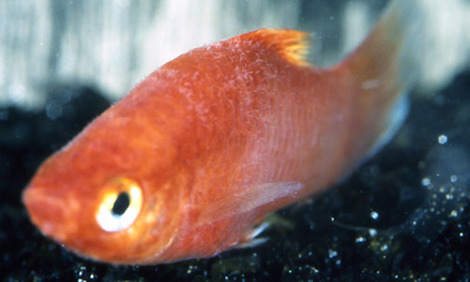Update:
So far, the Praziquantel seems to be working in that the deaths have stopped, however, it is not the end. I completed a large water change last night, and I will dose the medication again on Sunday. The medication kills the flukes, but not the eggs, so another dose is needed to kill the new flukes that emerge from the eggs that are in the tank.
I still have concerns though, and some of the fish still appear to be struggling. For example, I have some white spots on the Regal Tang. As always, with any infection, there is the risk of a secondary infection. The stress of the first infection can possibly lead to another infection of something else. The Blue Tang has developed some white spots. I don't think it's Itch, but white spots could mean Flukes or even Velvet...or a bacterial infection....or..... It really is difficult to reach a prognosis as most of the infections have similar symptoms. The last Anthia is showing signs of Velvet.
The more you read, and the more photos you look at just make it even more difficult. One minute I see a photo somewhere, and I think "that's it", but then I look at another photo of a different type of infection, and I think, "that's it as well!". It just gets really confusing, and at one point I was thinking to myself, "blimey, that fish has Velvet, those other three have Flukes, and maybe those other four have Itch!!!". Being rational, that scenario is highly unlikely.
So.......I will continue with the Fluke treatment, as this was my first suspicion, and what I have done has stopped the fish dying. I have also ordered some Ruby Reef Rally. This claims to be a medication for Velvet that can be administered directly into the tank without harming anything, because it contains no Copper! Some people online claim it is just Snake Oil, others claim that it works.
My angle is that if I have to remove all my fish to a QT tank, then basically I can only do that by removing a third of the rock from the tank, creating an empty 'space' and then using an acrylic divider to usher the fish into the empty part so I can catch them. For me, that would not be easy. For those of you with a lot of Coral, I'd imagine it would be near enough impossible, plus heartbreaking to have to break down your tanks like that. Doing nothing mean the fish will die. So, I am in the position of being able to test out these 'Snake Oils' as I have very little coral that could be affected. If it works, great. If it doesn't, well, the fish were going to die anyway if I did nothing.
So, one more dose of the Fluke medication, and if that doesn't work, then I have to switch my attention to something else, which I suspect may well be Velvet. I've ordered the Ruby Reef Rally as a 'just in case' measure. It'll take a day or two to arrive, as it's better to have it on hand for immediate use if I need it. It costs about 50 euro for one litre, which is basically the price of one fish.
One other point. As far as I can see, using the Gyrodol has not had any affects on the Invertebrates or the corals. It did make the Skimmer go ballistic though when I switched it back on!

